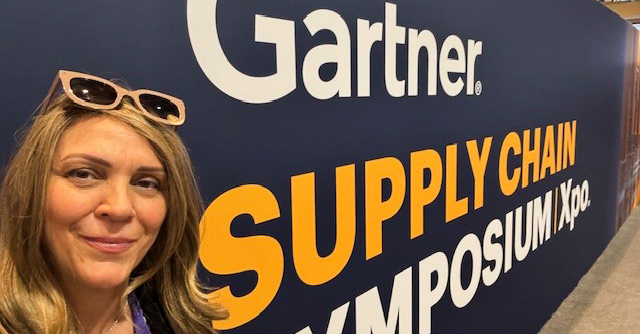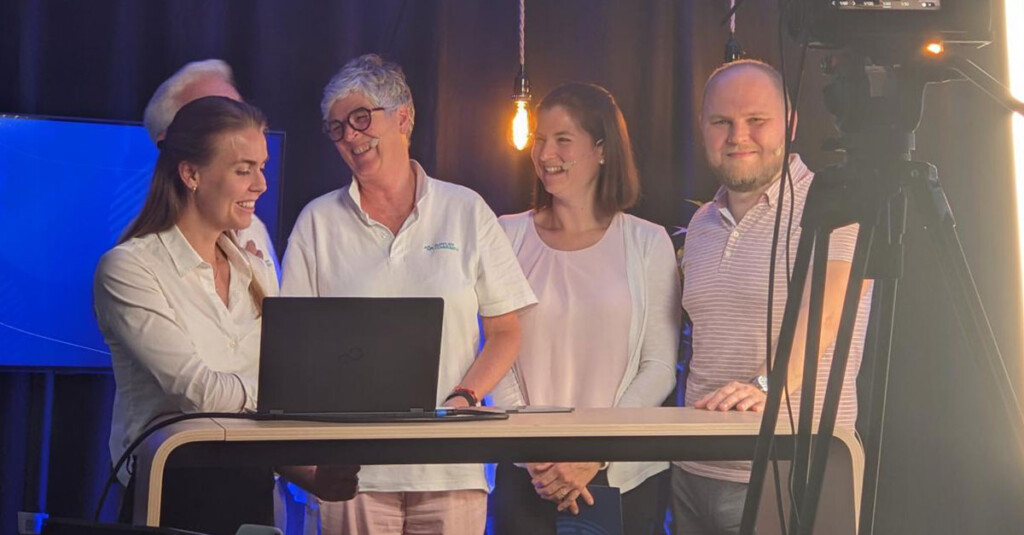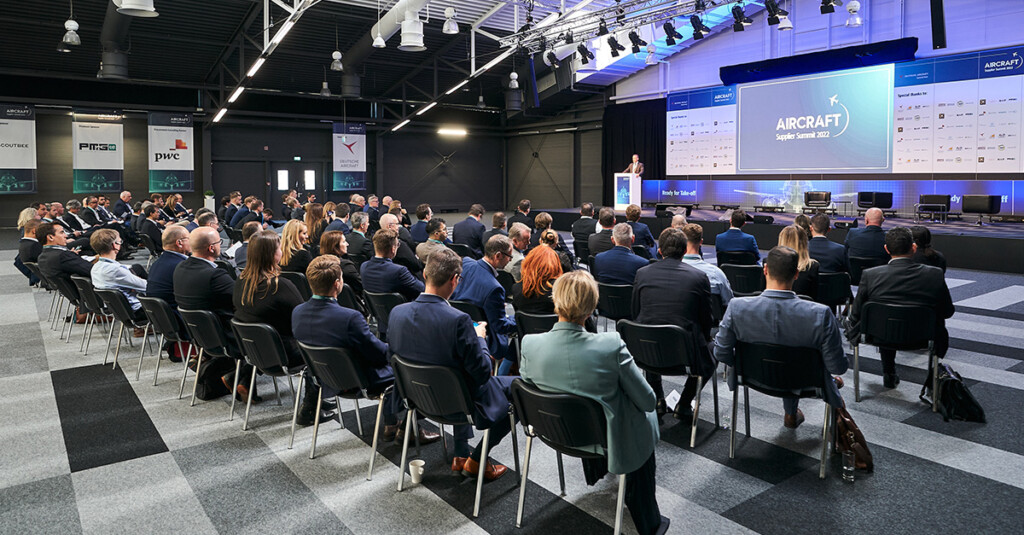Skip to content
Sustainability and climate initiatives are increasingly important today. At the same time, companies are under increasing pressure to meet legal requirements for reporting carbon emissions. For suppliers, this means providing their customers with detailed information on their production emissions. To make this process easier, SupplyOn offers an innovative survey tool that optimally supports the user by integrating an intelligent chatbot.SupplyOn's new chatbot is based on the latest generative AI technology. It is trained to support users in completing the Corporate Carbon Footprint (CCF) survey. The bot draws on a comprehensive database of user guides, question and answer lists and other content.By interacting with the chatbot, users can pose questions directly to a digital assistant that provides immediate, expert answers. Long waits for support feedback are a thing of the past.Strengths of the chatbotOne of the chatbot's greatest strengths is its ability to explain and clarify the technical vocabulary used in the survey. Users can ask questions to better understand what exactly is meant by a particular question. The chatbot can also provide information on measurement and calculation methods for different types of emissions, as well as details on possible energy mixes.A particularly helpful feature of the chatbot is its intelligent "reasoning". The bot can independently analyze whether the emission of a described process is a direct or indirect emission, or whether it should be classified as a downstream or upstream emission. In this way, the digital assistant can recommend to the user in which field of the survey specific emissions should best be entered.Launch of a comprehensive AI-based support strategyThe CCF chatbot marks the start of a company-wide introduction of an AI-based help and support system at SupplyOn. The aim is to simplify the use of our applications and significantly reduce support times for our platform users.The integration of the chatbot into the CCF survey is an important step in making it easier for companies to comply with sustainability standards while increasing efficiency. By using AI technology, SupplyOn ensures that its customers are optimally equipped for the challenges of the future.SupplyOn's goal is to provide customers with innovative solutions that meet both the demands of the present and the challenges of the future. The new chatbot is an integral part of this strategy and underlines our commitment to sustainability and technological excellence.

SupplyOn joined over 4,000 attendees at the 2024 Gartner Supply Chain Symposium/ Xpo in sunny Orlando. Together, we were all on a mission to connect and gather knowledge and insight about the latest supply chain trends and technology to bring resiliency to their organization's supply chain. These are my 5 key takeaways from this inspiring event:Resilience & Risk: The supply chain has always been challenging and fragile, even before the global pandemic. Still, today, disruptions have become more frequent and severe. Analysts advise making changes in supply chains to depart from an “antifragile” state. There must be a focus on resilience and risk management while adopting proactive strategies to achieve resilience.AI/Data-driven Decision-Making: Accurate, up-to-date data has always been critical for supply chains. Organizations must harness the power of data analytics to gain actionable insights, optimize operations, and drive informed decision-making at every level of the supply chain.Digital Transformation: Organizations must fully embrace digital transformation in their supply chains. Technology must be leveraged to enhance visibility, agility, and efficiency across the supply chain.ESG/Sustainability: In my opinion, the US has been slower to move forward with ESG requirements, but this topic is gaining traction, especially as global requirements are impacting the US in multiple ways. Gartner highlighted that ESG is growing recognition within the supply chain. Beyond being kind to our planet, it is clear, organizations must reduce carbon footprint, ensure ethical sourcing practices, and promote social responsibility in order to remain competitive in the global marketplace, while reducing costs.Partnerships: Partnerships are essential for growth and collaboration within the supply chain. Forging strategic alliances with suppliers, customers, stakeholders, and solution providers is critical to driving innovation, mitigating risks, and creating shared value.Partnering with SupplyOn can transform your supply chain to become resilient.SupplyOn offers a comprehensive suite of digital supply chain solutions that align with the key takeaways from this latest event. For over 20 years, SupplyOn has been partnering with organizations to accelerate their digital transformation journey, enhance resilience, promote sustainability, foster collaboration, and leverage data-driven insights to drive competitive advantage in today's dynamic business landscape.

From 2018 to 2021, the value of production in the Leonardo-led supply chain grew by 14 percent, from 21.4 to 24.4 billion euros. How was this possible? Leonardo is a large defense and aerospace company, a sector that in Italy includes other major players such as Thales Alenia Space, Avio Aereo and Macaer. The company led by Roberto Cingolani, just in 2018 initiated the important Leap (Leonardo Empowering Advanced Partnerships) program with the dual purpose of creating a digitally integrated ecosystem and promoting advancement in terms of innovation and resilience of strategic suppliers. Quality, cost, time, and technology utilization targets were defined. Then, Leap evolved: sustainability targets were added, with Leap - Partnership for Sustainability. But all this would have been difficult to achieve without AirSupply.But what is AirSupply? It is a powerful tool for purchasing departments (provided by SupplyOn, a company with headquarters in Hallbergmoos, near Munich, but also with offices in China and the United States). It is a shared industrial Cloud platform that optimizes more than just the working relationship between the manufacturer and suppliers, but also communication with suppliers in the downstream supply chain. It enables suppliers not only to connect and receive purchase orders; but also to change, within certain limits, delivery times and quantities. Above all, the platform is characterized by high visibility: suppliers can see if there is a decrease in demand from Leonardo's customers, and based on that they can adjust their raw material purchases. If, on the other hand, demand is robust, they can make longer-term purchases, which result in financial savings. This has increased the resilience of the supply chain, and allowed Leonardo to shorten lead times.87 percent of the 4,000 suppliers using the platform are SMEs. For example, Lombardy-based Logic (active in the development of avionics and electromechanical subsystems and components); Marche-based Civitanavi Systems (which makes inertial navigation and stabilization systems); Apulia-based Manta Group (which produces aerostructures for both fixed and rotary wings); and Campania-based Ala (active in the distribution and supply of advanced logistics services). Leap's next step? That of working on CO2 emissions. The context is still the Partnership for Sustainability, but the idea is to reduce the environmental impact of companies. That is the challenge for the next few years, and it concerns, of course, the whole supply chain. Progress toward the targets will be measured scientifically.Giacinto Carullo, Chief Procurement & Supply Chain Officer at Leonardo, talks about all this.What information systems do you use for dealing with your supplier network? What technologies?We use the AirSupply system, a powerful procurement management tool used by large Groups such as Airbus, Thales, Safran, Dassault, Liebherr, Premium Aerotech and Daher. It was to harmonize and standardize collaboration with suppliers to have a common digital platform and procurement process within the group. AirSupply enables high traceability, responsiveness and inventory control in our supply chain. First, it was piloted, for indirect spending, by Leonardo Global Solutions; then, for direct procurement, by the Aircraft and Aerostructures divisions; and finally, by the Helicopters and Electronics divisions. Essentially, it is a Cloud portal: suppliers connect and receive purchase orders. Most importantly, they have visibility into confirmed orders, with the ability to modify them.What exactly does the ability to change confirmed orders mean? Within what time frame can they do so and to what extent?The time frame depends on the type of supply, e.g. for products within the 12-month lead time, typically the first two to three are "frozen," followed by three to six "flexible" months, during which, in agreement with Leonardo logistics, it is possible to change the quantity - by 10%, 15% - and the delivery date. There are then several additional "forecast" months, in which the supplier sees commitment, but this does not necessarily result in an order.And who benefits from not translating a pledge into an order?In the AirSupply system, when there is a decrease in our customers' demand for Leonardo's products, our suppliers see it. As a result, they can make their own calculations and, for example, buy a smaller amount of raw materials that they need to make their components. Conversely, this long-term visibility allows suppliers – when they know demand is intense – to make long-term purchases, which generally saves them money. All of this has the dual effect of increasing supply chain resilience, especially in times of stress; and allowing lead times to be shortened.Does this mean that suppliers must adopt AirSupply?The system is a KPI in our Industrial Sustainability Roadmap. In short, AirSupply adoption is a key driver for supply chain digitization and high-level procurement. Our goal is to use the portal for more than 80 percent of supplier transactions. More than 5 thousand suppliers are currently using it, including more than a thousand in "full" digital integration mode. It means that the most important suppliers are already operating on the platform, which helps to create a digitally integrated and synchronized supply chain ecosystem.How does this fit in with Leap - Leonardo Empowering Advanced Partnerships - a program launched in 2018?Leap is a program to transform and accelerate the development of the supply chain. It is designed as a constantly evolving model. The initial point, but also the "key" point, is that it is intended to increase the level of partnership. The excellent supplier becomes a long-term, "stable" partner, and consequently gains visibility in the system, and enjoying the certainty of the relationship can invest in its own business and growth (including technological growth) contributing to its competitiveness, ours and that of all the other players involved. Partners are called upon to increase quality and must be excellent in operations. This is first and foremost in our interest. Our CEO, Alessandro Profumo, has repeatedly stressed this; Leonardo cannot be sustainable and competitive if its supply chain is not: the quality and safety of the final products depend on it, as do the flexibility and ability of the company's business model to adapt to technological challenges. What we offer our suppliers is a long-term perspective of cooperation, putting them in the best conditions to be able to plan and pursue their investments over the long term, thus also supporting their ability to compete independently in the market. Supplies to meet the fulfillment of our contracts can in fact last for as long as 20 years; it is good for the supplier to remain in the market for an equivalent period, to provide the components and services essential to us and our customers. AirSupply strengthens the partnership and makes it more streamlined and secure. Moreover, in 2021 Leap underwent a major upgrade.What update have you made to Leap in 2021?The program has evolved into Leap Partnership for Sustainability. The dimensions of sustainability have been added to those of quality and technology. Now partners are required to address security, health & safety, environmental and social responsibility, risk management. And they must share their strategies in this regard. In short, in 2021 we started building our ideal partner. Starting with an assessment.Did you carry out an assessment in 2021?Yes. The assessment involved 500 suppliers, the most important ones, and covered something like 200 KPIs. Already the fact that they were confronted with all these dimensions was important, for them, because it showed them the path to take by involving the staff. However, after "measuring" the degree of maturity of the partners on the dual quality-sustainability front, we began the maieutic approach.What does the maieutic approach consist of?We guided the 500 partners along the growth path, helping them to achieve their goals. With necessarily different actions from each other, based on the weaknesses of the partners manifested during the assessment. Some showed greater difficulties on processes, some on other aspects. In any case, we outlined a plan with two main objectives.What are the two main goals of your supply chain growth strategy?First, that of ensuring the strength and sustainability of the supply chain. Precisely because suppliers are called upon to provide us with services and components for periods of up to 20 years, they must be able to continuously improve their performance – the bar of objectives is continually being raised. Second, that of creating a significant number of Tier-1s (first-tier suppliers; typically, they know the strategies of the OEMs, know what technologies the OEMs are investing in, and are aware of their projects. In some cases, based on this information, they direct the whole supply policy and regulate its flows – note of the editor) and Tier-2 (basically specialists, who develop individual components on the basis of know-how established over the years – note of the editor) of international dimensions. Moreover, we are giving up supplier exclusivity. The fact that they have a strong partnership with us does not mean that they cannot or should not work with competitors. If they are good for us, they will be good for Airbus, for example. And in the marketplace they become more sound, more competitive and more resilient, helping to build a positive-sum game. All this merely increases the sustainability of our supply chain.What is the next step?The next step is to work on CO2 emissions. The context is still the Partnership for Sustainability, but the idea is to reduce the environmental impact of companies. That is the challenge for the next few years, and it affects, of course, the whole supply chain. Progress toward the targets will be measured scientifically, because Leonardo is part of Sbti (Science Based Targets initiative), a global initiative established in 2015 (by a collaboration between several organizations, such as the Carbon Disclosure Project, the United Nations Global Compact, the World Resources Institute and the World Wide Fund for Nature – note of the editor) to help companies set emission reduction targets in line with climate science and the goals of the Paris Agreement. The metrics used are very precise. The goal, for Leonardo, is a 40 percent drop in emissions by 2030.Does your supply chain generate a lot of emissions?Actually, the largest share of emissions is certainly downstream, among those who use, for example, our helicopters or airplanes. We have few energy-intensive factories; when it comes to the aerospace industry, this is equivalent to 2 percent of global emissions – but 1.5 percent is due to those who do aviation. So almost all of it.Among other partnership activities, you help your suppliers from a financial perspective. How does that work?Here, the "how" is very important, because it makes a difference. Results are generated or not generated because of the "how." Specifically, we have made agreements with seven banking groups to do supply chain financing. For example, we as Leonardo enjoy special factoring conditions (the assignment of credit – note of the editor): it was agreed that they should be extended to our suppliers. These moreover can get advances not only on invoices, but also on Leonardo's orders. For them it is a great help: since the lead time lasts 12 months, they must expose themselves financially; if they can get financing from banks on good terms, it is easier for them.And why did the banks agree to it?Because banks are familiar with our supplier program, and as a result they think that in the case of our suppliers we see a decrease in credit risk.There were 67 key suppliers of Leonardo, with a turnover of 1.3 billion euros and a total of 7,500 employees, who participated in the Elite-Leonardo Lounge program developed with Elite di Borsa Italiana. What did it consist of?In a development path aimed at entrepreneurs and top managers of supplier companies to accelerate their growth by facilitating access to capital, network, and key skills. Through it, companies were able to create a long-term strategic business plan and shared it with Leonardo. A key step: by overlaying our plan with theirs, we were able to assess whether the suppliers were heading in the same direction as us, especially in terms of technological development. What's more, about 50 M&A transactions have occurred in our supply chain; 70 percent of these involve companies that have gone through the Elite route. It means that they felt the need to strengthen themselves in terms of size, and this is good for us; it is also good for them from the point of view of competitiveness.What are the current obstacles for Leonardo's supply chain?For Italian suppliers, the problem is to be able to be competitive in the European context. As for the average size, these are small companies; as for the level of digitalization, it is good in relation to the average Italian company, but it is not yet at the level of the European average. In short, these companies need to be able to make a major leap forward. For this, a great product is not enough: you need planning, management, investment, long-term vision. And you must work on all these dimensions at the same time. It is not easy, but it is certainly not impossible. This interview by Marco de' Francesco has been published in Italian in the online magazine Industria Italiana: https://www.industriaitaliana.it/leap-leonardo-airsupply/

Beginning of July, SupplyOn hosted a Supplier Community Event on the topic of Company Carbon Footprint (CCF) to promote the importance of measuring and reducing carbon footprints within the supply chain. The event was a collaborative initiative of Continental, Bosch, Schaeffler, and Vitesco Technologies, and was run and supported by SupplyOn.The event focused on encouraging suppliers to accurately measure and report their carbon emissions. The tool to do so is provided by SupplyOn through a survey, which allows the information to be obtained very efficiently. The data collected that way is crucial in determining the environmental impact of the supply chain and can help identify areas for improvement. The event aimed to raise awareness about the importance of carbon footprint measurement and provide guidance on calculating and tracking emissions.Throughout the session, experts from the participating companies emphasized the necessity for sustainable business practices. Andrej Antipov from Bosch highlighted the alignment between all companies involved, emphasizing the shared goal of implementing CO2 reporting and reduction measures across the supply chain. As part of Bosch’s climate action activities, the company keeps an eye on emissions in the upstream and downstream stages of its value chain (scope 3). Bosch has the goal to cut such CO2 emissions by 15 percent in absolute terms by 2030 compared with the baseline year 2018.Veronika Leutgäb from Continental discussed their commitment to renewable energy and the importance of suppliers having a roadmap toward using electricity from renewable sources. Continental has joined the global RE100 initiative committing to using green electricity and expects its suppliers to do the same. By increasing the use of renewable energy, CO2 emissions can be significantly reduced throughout the supply chain.The event provided a platform for companies to learn from each other and exchange best practices for measuring and reducing carbon footprints. It was an opportunity for suppliers to understand the expectations of their customers in terms of environmental impact and to work towards aligning their practices with sustainability goals.A major step in driving environmental awareness among business partnersSupplyOn's CCF event marked an important step in promoting environmental consciousness and sustainability within the supply chain. By encouraging suppliers to accurately measure and report their carbon emissions, companies can work together toward creating a greener and cleaner supply chain for a sustainable future.Continental further emphasized its commitment to sustainability and indicated that they are working on enhancing its supplier evaluation process to give greater weightage to sustainability aspects, including carbon neutrality and responsible value chains.Markus Oberender also emphasized that Vitesco Technologies is interested to learn about the general strategy and roadmap of suppliers, e.g., when will they start using only renewable energy and when do they plan on becoming carbon neutral.The Schaeffler Group set itself the goal of achieving climate-neutral operations and reducing CO2 emissions in both in-house production and the supply chain by 2040 – for example, by using renewable energies. Sophia Schmid, from Schaeffler, expressed the importance of the CCF survey in gaining transparency from their suppliers. The survey results will be considered in future supply chain evaluations, underlining their commitment to sustainable sourcing decisions. Vitesco Technologies supported that expression by emphasizing the seriousness of the topic. For them, this will be one of the major issues for the next years. Therefore, the sooner the suppliers start the better.Overall, the event was a huge success, showcasing not only the collaboration of industry leaders in promoting sustainable business practices but also the commitment of their suppliers to support this joint effort. The collaborative endeavor of SupplyOn, Continental, Bosch, Schaeffler, and Vitesco Technologies highlights the importance of measuring and reducing carbon footprints in creating a more environmentally conscious supply chain.

Managing both automotive and aerospace, as well as complex manufacturing, has kept me busy attending back-to-back conferences in 2023. It's only fitting to title my latest blog post with a nod to an old advertising colleague and friend, Steve O'Connor, who used to host an annual "Ski Like You Drive" event in Wisconsin (the Vail of the Midwest, sort of). It's fascinating to observe the strong connection between these industries, which share many suppliers. Automotive manufacturing, with its faster production and shorter lead times, is often at the forefront of transportation technology. Now, as Jetson's-style flying cars become a reality, they are becoming even more intertwined.As we approach the mid-year mark, it's clear that 2023 has flown by, driven not only by the series of conferences in the aerospace and automotive sectors but also by the surge of inquiries about our supply chain solutions. Now more than ever, organizations are seriously engaged in digital transformation efforts, with tight deadlines to meet. One customer aptly described the current situation as a "two-year backlog." After the uncertainty caused by the global pandemic, we face the same old challenges, along with new ones and ongoing unknown risks.A hectic yet exciting year so far: conference insightsThe Stellantis Town Hall Meeting kicked off my conference circuit. Hosted by MEMA (Original Equipment Suppliers) in the Detroit area, this conference provided an overview of Stellantis' future vision and strategies. It was a half-day session followed by an opportunity to meet the team and network with industry professionals.Next up was the PNAA’s Annual Aerospace Conference, called Advance 2023. This well-attended conference brought together hundreds of aerospace professionals from over 350 companies at the Lynwood Convention Center in Seattle. It was a great occasion to reconnect with old friends and explore the current and future state of aerospace, including technology advancements and supply chain challenges such as shortages, more visibility, transparency, and our ecosystem. Technology and tools were top of the list of subjects, and the message was clear for need for partners in the supply chain. I managed to contain myself and not stand up in the audience, wave my arms, and yell, "Hello, come talk to me about SupplyOn". Global discussions were in play, with a close eye on our overseas counterparts.Circling back to the East, I visited the South Carolina Automotive Conference in Greenville, South Carolina. The hot topic here was sustainability, an increasingly crucial aspect of the automotive industry. It was an excellent opportunity to learn from industry pioneers and explore the latest advances in sustainable practices. The conference also featured a display of Clemson University's autonomous vehicle, which showcased cutting-edge 3D printing technology.In between the conferences, meetings, workshops, and proposals we held our Annual SupplyOn North American Summit in South Carolina, near our North American headquarters. The summit was led by our Global CEO, Markus Quicken, and our North American CEO, Derek Baggerly. We concluded our summit with a tour of the BMW factory, complete with robots, exoskeletons, and hydrogen-fueled golf carts. This summit also kicked off customer and shareholder visits to North America. What’s unique and special about these visits is the engagement with our customers and the inclusion of their feedback into our technology roadmap. This is one of the key reasons I call SupplyOn the “Goldilocks” company: just right the right size to support customers like BMW and Airbus but also the right size to be agile, flexible, and accessible in order to partner genuinely.Next up was the Aerospace Industries Association (AIA) SMC Conference, hosted by Boeing in Phoenix, Arizona. This conference always provides an intimate setting for OEMs and suppliers to get together. Honestly, these events feel like part family reunion/part work happy hour but with very informative and inspiring sessions—topics surrounding supply chain challenges with parts, policies, governance, ESG, and future predictions.Aeromart followed shortly after AIA in Montreal, Canada. This conference toggles back and forth between Montreal and Seattle each year, further building our alliance. Discussions centered around supply chain challenges, future needs, labor shortages, visibility, transparency, and leveraging technology and tools. SupplyOn had a prominent presence at the conference, hosting a booth and delivering a workshop by our CEO, Derek Baggerly, to bring the buzzwords to business case. Sustainability, transparency, visibility, and ecosystems, to name a few.Throughout 2023, the demand for our supply chain software has been overwhelming, leading me to prioritize partnerships and skip a couple of conferences. However, this high demand signifies the growing importance of digital transformation in supply chains. As we move forward, transparency, visibility, collaboration, and sustainability remain key drivers in meeting the needs of 2023 and beyond.Looking forward to the Paris Air ShowWrapping up the mid-year recap, I'm excited to attend my first Paris Airs Show. This is an important event, particularly with the increased interest from North America. I'm honored to be a part of the show and look forward to engaging with industry professionals, learning more about aerospace organizations, and enjoying the airshow. Stay tuned for the show's highlights, the rest of 2023, and more!

How do you achieve a resilient supply chain with transparency, visibility, and sustainability in 2023? Focus on these four areas:CollaborationActual two-way collaboration is necessary to achieve supply chain resiliency. Instead of chasing down parts, real-time updates and feedback all in one place are needed to make the best decisions. In order to achieve this, accurate data and the right tools are imperative for this process to create a holistic environment for both your organization and supply chain for ultimate success together. DataTo create more effective and efficient supply chain management we need data. Everyone wants data and has it in some form. Unfortunately, what is referred to as a "data lake" is often more like a bunch of random muddy puddles in a field after a huge rainstorm; not clear, not connected, unknown depths, and is generally very messy. So how do you collect it and connect it to analyze it efficiently? With digital tools.ToolsFor accurate data, visibility, resiliency, and sustainability, ultimately, you need the right tools. Organizations everywhere realize and understand that more tools are required to level up a system, replace a system, or bridge the gaps with existing systems. With the right tools, data can be collected and organized in an easy-to-use platform with dashboards and reports at your fingertips to continually monitor, collaborate and analyze your data. True PartnershipManufacturers everywhere have a lot at stake. However, going away is the "do it or else" attitude regarding supply chain. Instead, it is being replaced with holistic, collaborative, and honest relationships with key suppliers and competitors. In 2022, I heard more and more, "how can we work together to get this done?" Wordsmithing mashups with competitor + partnership + friendship are coming into play like 'friendtitor,' 'partnitor,' and 'competiship.' Right now I am loving this more open-minded approach to chaining business processes and practices. I'm excited to be a part of this ecosystem and change for the future.

It's always important to take a look back before moving forward. Doing this keeps us from that brain fog thing of wondering why we walked into the kitchen for the third time in a row and still forget to turn off the oven. In 2022 there was a lot, and even though 2020 and 2021 seemed like they morphed together to make one extra-long, exceptionally insane, and challenging year, 2022 felt like an extension of that in many ways. I'd liken it to a roller-coaster (and I mean the kind of broken down, roller-coaster at an abandoned amusement park with monsters chasing it, ala Scooby Doo) with the non-stop events, war, more covid and health issues, insane weather, strikes, raw material shortages, price jumps and still fearful of those murder hornets. Before Covid, when a random person would ask what I did for a living, and I said supply chain software for automotive, aerospace, and complex manufacturing, I'd immediately see their eyes glaze over and then dart around looking for a quick exit. Supply chain sounded boring or too complex, and even more, the software for it. "Kind of a specialty," I'd remark and smile to myself, as the average person had no idea just what pressure went into the day of a buyer or supplier in supply chain. Supply chains take center stageThen Covid hit, and supply chain was now a household term. Suddenly, I felt like I was in that 1979 EF Hutton TV commercial, except for the supply chain. People actually wanted to listen about supply chain software. In fact, I'd find myself engaged in long conversations about supply chain matters and essentially saving the world. Even my kids were talking about it. Especially when I'd come home from grocery shopping and I'd turn up with their favorite food or snack requests missing from the grocery store run. Topics would range from worker shortages, safety, illness, raw materials, strikes, printed packaging, inks, crops, and transportation, to name a few. I'd explain what I already knew and then try to figure out what exactly was going on.As a dabbler in creative writing, I couldn't even make some of this stuff up. It was sometimes perplexing why some things just went missing for months and not others. But we muddled through like everyone else; people and companies got creative and resourceful. It was impressive to watch it unfold. By the end of 2022, even with all the chaos, things started to feel normal-ish again, and the world opened up further. Companies needed solutions, and my calendar was booked up for introductions and demos. Supply chain was up front and center now. By fall, I was also able to attend quite a few sold-out industry conferences as well. Speakers, experts, and attendees clamored; we had all been cooped up for way too long and needed desperately to connect the way we used to. We had a thirst for more knowledge about the state of supply chains and thoughts on the future. The vibes were much more different; it was high energy, focused, with a scent of desperation for real change. From meetings with prospective customers, customers, and industry conferences, what was once a mere "pie in the sky" wish of real supply chain collaboration was now, even more, a much-needed reality. We needed to propel supply chain management into the future, not just to be efficient and manageable but to sustain the lives of companies.2022 needs recapResiliency"Resiliency" is a term that has been tossed around before the pandemic, but in 2022 I found it to be the theme of the year when it comes to supply chain. However, resiliency doesn't necessarily mean the same thing for everyone. The list goes on: strong supply chain, access to inventory, reduced costs, backup suppliers, and insight into trends, issues, and challenges. So, what does it mean to have a "resilient supply chain" to you? TransparencyEven before the global pandemic, supply chains were volatile. In the complex manufacturing world, buyers/planners would forecast and put their orders into suppliers around the globe, and suppliers would accept them. For automotive and aerospace, that could be a year-plus lead time or even longer. Until the promise date arrives and there are no parts, or perhaps if an advance ship notification (ASN) is generated, there is literally no status on the supplies that are ordered. When a part is missing or late, chaos ensues, right? Things like production shutdown can occur, late orders, and essentially, ultimately, affect the bottom line. VisibilityOne of the biggest things I heard over and over again at conferences and from prospects was having greater "visibility" into their supply chains all the way to tier N. The statement, "we don't know who our suppliers are, " became a constant concern. Of course, the goal is to plan better, and especially OEMs and top-tier suppliers want the ability to know things even before their suppliers do in order to plan better and make informed proactive decisions. SustainabilityI remember when sustainability was the buzzword back in the 90s. I worked on quite a few sustainability statements for customers. Everyone seemed to have a goal about sustainability by the year 2020. That came and went, and the global pandemic made us go backward on this initiative, more disposable everything, personal protective eqipment (PPE), shortages, expedited orders, and transit. After all this, we are trying to get back on course to reduce our carbon footprint while being profitable. Stay tuned for more tips, tricks, ideas, and ramblings.

Co-organized by the Berlin Institute Supply Chain Management, the German OEM Deutsche Aircraft hosted the first Aircraft Supplier Summit on November 15 and 16, 2022 at Leipzig Airport.Leipzig is the chosen final-assembly-line (FAL) location for the D328eco, the groundbreaking, forward-looking platform building upon the legendary Dornier Do328 aircraft, for which Deutsche Aircraft is the type certificate holder. The D328eco will rely on Sustainable Aviation Fuel (SAF) as transition to zero-emission flying. Planned by 2030, also hydrogen propulsion will be explored. The FAL construction is planned to start in 2023 already.Key topics of this summit wereHow Deutsche Aircraft and its partners shape the future of sustainable flyingCreating supply chain resilience in a VUCA* worldTechnology-enabled supplier collaborationESG* as a new mindset, towards improved sustainabilityPartnership between Deutsche Aircraft and its suppliersImproving supplier collaboration & supply chain resilienceIt is impossible to mention all the highly interesting keynotes with the all the valuable insights. Therefore, just some highlights from SupplyOn perspective:BoostAeroSpace CEO Rodolphe Péricat explained how the organization contributes to technology-enabled supplier collaboration. Building on a strong industry community, it addresses increased security needs and governs dedicated supplier collaboration platforms, including SupplyOn AirSupply.Deutsche Aircraft has chosen SupplyOn as strategic partner in order to digitally manage collaboration with suppliers and enable structured communication.ThyssenKrupp Aerospace CEO Patrick Marous shared how they foster supply chain resilience with their Supply Chain Control Tower. By considering resistance, forecast, avoidance, inventory and capacity buffers it secures the company’s ability to deliver in a VUCA world.One highlight of the summit for sure was the awarding & contract signature ceremony live on stage for two new suppliers of Deutsche Aircraft: Bucher Leichtbau from Fällanden, Switzerland, and Elbe Flugzeugwerke (EFW), Dresden. The latter is also a SupplyOn customer for AirSupply.Great forum, to be continuedThe Aircraft Supplier Summit was a unique opportunity to exchange with decision makers of Deutsche Aircraft. It was also a good forum for face-to-face discussions with strategic partners and suppliers.To wrap up, attendees were asked to provide their feedback on the event. Among the key take-ways mentioned were insights on supply chain resilience, sustainability, and technology as an enabler. But also partnership and inspiration were important attributes of the conference.The next Aircraft Supplier Summit is already scheduled: Nov 7 and 8, 2023, again in Leipzig. See you then! --*VUCA: volatility, uncertainty, complexity, ambiguity** ESG: environment, social, governance
